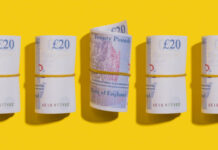Easy to grasp, difficult to master.
Forex and FX are interchangeable abbreviations for Foreign Exchange, which is a term used to refer to the global currency markets. As complex as these markets are, currencies are probably the easiest of all the asset classes for beginners to get to grips with. Even people who have never traded before will have a basic understanding of what currency trading involves. After all, everyone is familiar with using their national currency, and many have had the experience of converting this currency into another one of a different value when travelling. This, in a nutshell, is what currency trading is all about. Currencies differ in value and these differences are constantly changing; buying an undervalued currency as it begins to rise yields profits, selling an over-valued currency as it begins to fall also yields profits. Conversely, selling in the former example and buying in the latter will cause you to incur losses. Simple enough, right? Yes, but learning to discern the influences that cause these fluctuations, and being able to act upon them in a timely and consistently profitable way, that’s the real challenge of trading Forex.
Exchange rates explained
Exchange rates are the relative values between currencies that belong to different countries or economic regions. When you are presented with an exchange rate, say for EUR/USD, you are being quoted the value of one currency in relation to the other (in this case the euro against the US dollar). This is why you see two currencies in an exchange rate quote but only one figure; the value of one is determined by how much of it you can buy with the other. It makes no sense to think in terms of absolute values when it comes to currencies as their values are interdependent. This is one of the main differences between trading Forex and trading equities or commodities.
The first currency in every pair is called the base currency, this is the one that you are being given the value of. It is also the one on which you are performing the action of either buying or selling when trading Forex. The second currency in the pair is the quote or counter currency, the figure quoted in an exchange rate is denominated in this currency. Essentially when you see an exchange rate you are being informed what the base currency is worth in terms of the quote currency. So when looking at an exchange rate for EUR/USD you are being quoted what the euro is worth in US dollars, or more accurately how many US dollars are required to purchase 1 euro.
So a EUR/USD exchange rate of 1.33 means that 1 euro is worth 1 dollar and 33 cents, or that $1.33 is required to purchase 1 euro. Currencies are always quoted in this way, were it not for this convention 1 euro would just be worth 1 euro, and that would tell us nothing about anything.
When EUR/USD rises, this means that the euro is growing higher and/or the dollar is getting weaker. As a Forex trader you can position yourself in different ways, taking advantage of any eventuality. You can buy, or go long on EUR/USD when you think the euro is likely to rise, or when the US dollar is likely to fall. You can also sell, or short EUR/USD when you foresee that the euro is due to drop in value, or when you think the US dollar is about to rise.
A closer look at currency pairs
All currencies are given a three letter abbreviation known as that currency’s ISO code, in most cases the first two letters refer to the country, and the third letter refers to the name of the currency in question.
The most commonly traded currencies are known as the majors. These are: The US dollar (USD), the euro (EUR), the Japanese yen (JPY), the Great British pound (GBP), the Swiss franc (CHF), the Canadian dollar (CAD), the Australian dollar (AUD) and the New Zealand dollar (NZD).
The major pairs all involve USD being paired with each of the other major currencies listed above.
| Major Currency Pairs |
|---|
| EUR/USD (Euro-zone/ United States) |
| USD/JPY (United States/ Japan) |
| GBP/USD (United Kingdom/ United States) |
| USD/CHF (United States/ Switzerland) |
| USD/CAD (United States/ Canada) |
| AUD/USD (Australia/ United States) |
| NZD/USD: (New Zealand/ United States) |
Pairs that do not feature the US dollar as either base or quote are known as the cross pairs, or crosses. The main crosses consist of any of the major currencies listed above (except, of course, USD) crossed with each other (the most common cross pairs are those which feature the euro, pound sterling, or yen).
One thing to keep in mind is that the euro is always the base currency in any pair. It’s easy enough to reverse an exchange rate though, if you need to. So, for instance, if you want to find out the value of USD/EUR (how many euros it takes to purchase one US dollar) all you have to do is divide 1 by the EUR/USD exchange rate (1/1.33 = 0.75). In this example one US dollar can be purchased with 75 euro cents.
In addition to the majors and the crosses there are also the exotic pairs. Exotics consist of a major crossed with a lesser traded currency such as one belonging to an emerging market. Exotic pairs are less liquid and can cost more to trade due to them having wider spreads.
Buying and selling
Most beginners will quickly gain an understanding of how exchange rates work, but then they log into their broker’s trading platform for the first time and are greeted by two prices, as well as the option to buy or sell, and their heads start to spin. It may be a little confusing at first but it’s really not as complicated as it seems.
In Forex trading you have the option to buy or sell the base currency in the pair. How exactly do you sell something that you don’t actually own in the first place? Well you borrow it from your broker. So if you want to sell, or short, 1 lot (or 100,000) of EUR/USD, then you essentially have to borrow it from your broker before being able to sell it (it’s not quite a loan but we’ll look at this ‘borrowing’ in further detail when we focus on how CFDs work). Doing this means that you are expecting EUR/USD to drop in value so that you can then buy it back cheaper at a later time, returning those 100,000 units to your broker, and keeping the profit you made for yourself.
As confusing as this may initially sound, don’t be daunted by the option to sell and the two different prices you are quoted. All currency trades involve both buying and selling; closing a position you have opened requires you to perform the exact opposite action you took when you opened the trade. So if you clicked ‘Buy’ and bought 1 lot of a currency, then later you when click ‘Close Order’ you are effectively selling back those 100,000 euros you bought at the new price, keeping the profit or taking the hit depending on what the pair is valued at when you sell. Naturally, it follows that closing a short position, as we saw in the example of selling EUR/USD above, involves buying back the same amount of the currency that you initially sold to open the position. When this balance is restored and you no-longer have any open positions you are said to be square, or flat. If you went long, then squaring-up requires you to sell the same amount of the currency you initially bought. If you shorted, then squaring-up involves you buying back the same amount of the currency you initially sold.
Also keep in mind that since every currency you buy is a pair of currencies, every position you take involves buying one and selling the other. This is not something you have to think about when you decide to click Buy or Sell, but to go long on a pair involves simultaneously buying the base and selling quote, conversely shorting involves selling the base and buying the quote (more on this later in the course).
Bid and Ask
The two different prices that you see quoted on your trading platform for each currency pair are the respective Bid and Ask (or Sell and Buy) prices available for that pair, the difference between these two prices is known as the spread. The Bid is the price on the left, this is the price at which you can sell a given currency pair and is the lower of the two prices listed. The Ask is the price on the right, it’s the price at which you can buy a given currency pair and is the higher of the two prices listed.
Essentially the Bid price tells you the most that buyers are prepared to pay for a currency, and the Ask price tells you the least that sellers are prepared to accept to sell a currency. All currency transactions involve a Bid/Ask spread. FxPro receives Bid and Ask quotes from our own liquidity providers, and by making different banks compete for your trades we select the most competitive Bid and Ask prices available to us and forward them to you. We make our commissions either by slightly marking up the spread if you trade on our MT4 platform, or by charging a set commission for opening and closing positions if you trade on our cTrader platform. A transparent broker’s revenue should only come from these sources.
Pips and Ticks
When viewing currency prices on your trading platform you’ll notice that they are displayed to more decimal places than you may be used to. Most of us are accustomed to calculating our country’s currency to two decimal places. This is because as mediums of everyday exchange most currencies have 100 fractional units. There are one hundred pennies to the pound, one hundred cents to the dollar etc.
On the Forex markets changing currency values are calculated by smaller increments. A pip is the name of the smallest increment that currency values can fluctuate by. For most currencies the pip is the fourth decimal place, in the case of the Japanese yen it is the second decimal place. FxPro calculates currencies to five decimal places on most pairs and to three decimal places on the Japanese yen. The ability to price pairs to an extra tenth of a pip allows us to more accurately reflect market conditions, which means that you get a narrower spread than when prices are just rounded up or down to four (or indeed two) decimal places. There is no convention for the naming of this fifth decimal place, some call it a fractional pip, some refer to it as pip decimal precision, and others have affectionately called it a pipette.
Pips should not be confused with ticks. While a pip is the smallest increment by which a currency can change in value, a tick is the increment by which it actually does change in value. So say a currency pair’s value changes 3 times between 13:01 and 13:02, these fluctuations can be as small as a single pip but they can also be larger. It could, for instance, jump 3 pips in value from 1.33912 to 1.33942, then drop by a single pip to 1.33932, and then jump by another four pips to 1.33972. The actual moves it makes, irrespective of the number of pips that each move is worth, are called ticks.
Even though ticks are what you will observe as you monitor a live chart of a currency, pips are what will make the difference to your trading account balance. This is why it is so important that you understand them. Pips are important for a couple of reasons. Broker spreads are quoted in pips, so a 1.2 pip spread means that there is a difference of 1.2 pips between the Bid and Ask prices on a given currency pair. Also, as a trader, your profits and losses are governed by how many pips the pair you have invested in rises or falls before you Buy or Sell. Once you have opened a position each pip up or down will be worth a certain amount of money to you, depending, of course, on the volume of your position and how much leverage you are using.
Successful currency trading can be boiled down to a very simple formula. Make pips; keep pips; repeat. As you will find out when you begin practicing with your demo account this formula is much easier expressed than it is realised.
Volume, leverage and margin
Trade volumes, leverage and margin are also common points of confusion for many beginners. Let’s begin with volume.
Volume: refers to the actual size of a trade and is ordinarily calculated in lots. In Forex a lot represents 100,000 units of a currency, in other words one lot of EUR/USD is a position worth 100,000 euros. Over the past few years mini and micro lots have also been made available to traders; a mini-lot is worth 10,000 units and a micro-lot is worth 1000 units of the currency being bought or sold.
Depending on the platform you are using this can be represented differently. On the MT4 platform your trade execution window has a section labelled ‘Volume’, from here you can select the size of the position you are to open. 1.0 is one lot, 0.1 is a one mini-lot and 0.01 is one micro-lot. So, for example, a trade volume of 0.4 on EUR/USD is a position worth 40,000, euros. On the cTrader platform volumes are labelled in a more familiar way, with options to enter trades anywhere from 10k (thousand) to 100m (million) being available as long as you have adequate margin in your account.
Let’s move on to leverage.
Leverage: enables you to command positions that exceed the value of your initial investment. Any time you borrow money or use a financial instrument such as a CFD to make an investment that exceeds the value of your capital, you are using leverage. In trading leverage is expressed as a ratio. FxPro offers its clients leverage from 1:1 (no leverage) to 500:1 (500 times the amount invested). So, say you want to buy 100,000 euros (1 lot) and have your account leveraged 100:1, then you will only need to have 1000 euros (or the equivalent depending on the currency your account is denominated in) as margin to guarantee the position.
Now on to margin.
Margin: can be thought of as a deposit that is required when using leverage. Each time you open a leveraged position a certain amount of your account balance is secured as margin. The exact amount is dependent on the size of the position and the leverage which is being used. Margin is there to guarantee the position you have opened in case it goes against you. Just as each pip up or down in an open trade will be reflected in your account balance, it can also eat into your margin should it turn against you.
Your free margin is the amount you have in your trading account which is not currently being used to guarantee any positions; this amount can be used to guarantee the opening of further trades.
Your equity is your trading account balance plus or minus the profits or losses from any open positions you have.
Your margin level is calculated as a percentage and is the ratio of your equity to used margin. When this figure drops to 100% it means that all of your trading account balance is being employed as margin and no further positions may be opened. Keeping your margin level as high above 100% as possible is important, especially for traders who invest on longer time frames. A high margin level allows you to stay in a trade for longer should it move in the opposite direction, so if you are convinced of the underlying trend you can wait for it to re-establish itself without risking a margin call. If you are confident in the position you have taken and regard the market’s move against it as temporary, you can afford to ride it out and wait for the trend you have invested in to reassert itself.
As mentioned earlier, the reasons that Forex trading used to be much less accessible to individual investors are related to volumes and leverage. Before mini- and micro-lots the minimum trade volume was 1 lot, factor in that leverage also used to be very limited, and it becomes apparent that opening the smallest possible Forex position only a decade ago required a substantial amount of capital. This is not the case today. Today an educated trader with a solid grasp of risk management can trade on the world’s currency markets, and be successful, with a relatively small initial investment.












